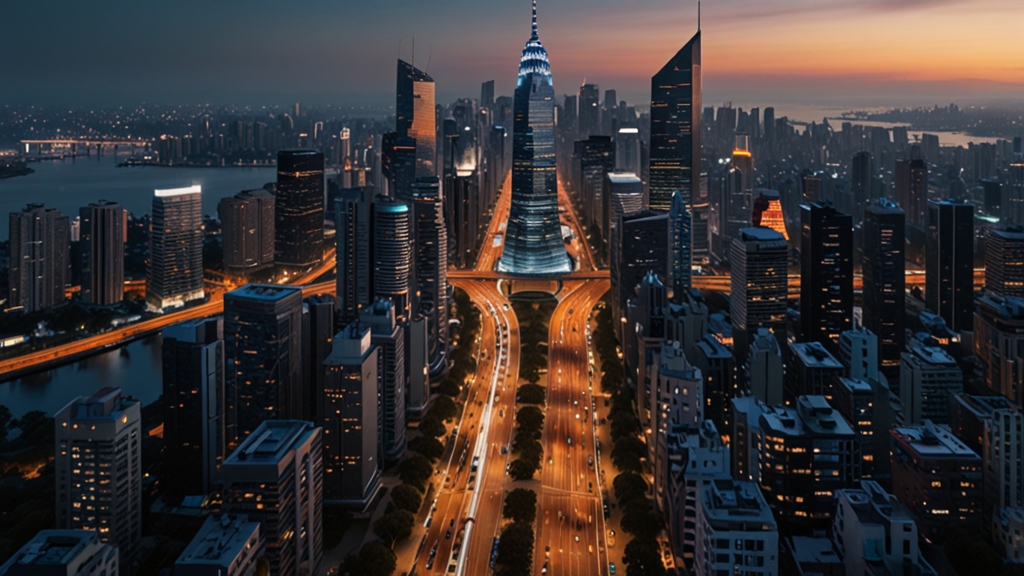Smart Cities: How AI is Shaping Urban Development
As the world continues to urbanize at a rapid pace, the concept of smart cities has emerged as a beacon of hope for sustainable and efficient urban living. At the heart of these smart cities lies Artificial Intelligence (AI), a transformative technology that's reshaping urban landscapes in unprecedented ways. From intelligent traffic management systems to predictive maintenance of infrastructure, AI is revolutionizing the way cities operate.
Enhanced Traffic Management
One of the most significant challenges faced by urban areas is traffic congestion. Traditional traffic management systems are often reactive, responding to problems as they arise. However, AI-powered solutions are changing this paradigm by making traffic management proactive and predictive. Through the integration of real-time data from traffic cameras, GPS systems, and social media feeds, AI algorithms can optimize traffic flow, reduce congestion, and improve overall efficiency.
“By leveraging AI to monitor and manage traffic, cities can significantly cut down on commute times and reduce carbon emissions, leading to a more sustainable urban environment.”
For instance, AI can analyze patterns in traffic data to predict when and where congestion is likely to occur, allowing city planners to implement preemptive measures such as adjusting traffic light timings or rerouting vehicles. This not only improves the daily lives of commuters but also enhances the overall efficiency of the city's transportation network.
Predictive Maintenance and Infrastructure Management
Another area where AI is making a substantial impact is in the maintenance and management of urban infrastructure. Traditionally, infrastructure maintenance has been a reactive process, often resulting in unexpected disruptions and high costs. AI, however, enables a shift towards predictive maintenance, where potential issues are identified and addressed before they become critical problems.
By analyzing data from sensors embedded in infrastructure elements such as bridges, roads, and buildings, AI algorithms can detect signs of wear and tear that might otherwise go unnoticed. This allows for timely interventions that extend the lifespan of these assets and enhance public safety.
“AI's capability to predict and prevent infrastructure failures is a game-changer for urban development, offering both economic and social benefits by reducing downtime and increasing the reliability of essential services.”
Smart Utilities and Energy Management
In the realm of utilities, AI is aiding in the efficient use and distribution of resources such as water and electricity. Smart grids, powered by AI, can balance loads more effectively, minimizing energy waste and reducing costs. Similarly, AI-driven water management systems can optimize the distribution and consumption of water, identifying leaks and inefficiencies that would otherwise go unnoticed.
Moreover, AI can assist in integrating renewable energy sources into the urban grid, facilitating a transition to greener, more sustainable energy practices. By forecasting energy demand and supply with high accuracy, AI enables cities to better manage their energy resources and reduce their carbon footprint.
Public Safety and Emergency Response
AI is also making strides in enhancing public safety and improving emergency response times. Advanced surveillance systems equipped with AI can analyze video footage in real-time, identifying suspicious activities and alerting authorities promptly. Additionally, AI-driven analytics can assist in predicting areas where crimes are likely to occur, allowing for more effective deployment of law enforcement personnel.
In emergency situations, AI can play a critical role in streamlining response efforts. For example, AI algorithms can analyze data from various sources, such as social media and emergency calls, to provide real-time situational awareness to first responders. This rapid analysis enables quicker, more coordinated responses, ultimately saving lives and reducing the impact of disasters.
“The integration of AI in public safety and emergency response systems represents a significant advancement, providing cities with the tools to keep their residents safe and respond to crises more effectively.”
Conclusion
The advent of AI is propelling the evolution of smart cities, making urban environments more efficient, sustainable, and livable. From traffic management and infrastructure maintenance to energy usage and public safety, AI's applications in urban development are manifold and transformative. As cities continue to grow and face new challenges, the role of AI will only become more critical, driving innovation and enabling smarter, more resilient urban landscapes.









